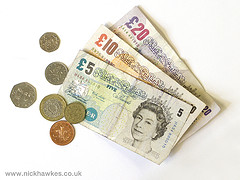The recent report by the Payments Council – the body responsible for setting the strategy for payments in the UK – should be a wake-up call to us all in the currency industry. Although the report covers the UK only, it is a trend that is typical of payment systems in many countries around the world. In summary, it documents a decline in the use of cash in the last decade and forecasts a further decline, detailing changes that have been taking place gradually, but steadily. Is this a case of ‘death by a thousand cuts?’ And, if so, is there anything we can do about it?
The key statistics show that between 1999 and 2009 the number of transactions in cash declined from 73% to 59% and by 2018 the number is predicted to have fallen to 45%. During the same period, debit card spending increased by 306% and is forecast to increase by a further 86% by 2018, when one in four of all transactions will be by debit card, compared with one in 20 in 1999.
But the debit card is not the only threat to cash – there are others, well-established, such as credit/charge cards, cheques, direct debits and credits and the growth of internet shopping, which virtually precludes the use of cash. We need not worry about cheques –their use is declining rapidly. Nor about credit and charge cards, which have mainly displaced cheques as the medium for high value transactions. But in place of those, there are new threats that are no longer just on the horizon– namely pre-paid cards, mobile payments and contactless transactions.
Convenient and Cost-Effective
The prepaid card market is still in its infancy. There are two types – ‘open-loop’ for face-to-face or online retailers and ‘closed loop’, linked to a single or limited number of retailers. The latter in particular are being adopted by transport systems around the world because they are convenient for the public and apparently cost-effective for the transport authorities.
Mobile payments – where a mobile device plays an integral role in a financial transaction – are also in their infancy but some of these transactions are direct substitutes for cash. This form of payment is having the most impact in developing countries, where people without access to banking services are able to make payments by mobile phone (see CN Vol 8, No 3). Even though it is still early days for this type of transaction, its upgrade is already conceived – contactless functionality. Given the ubiquity of mobile phones, the potential of these for payments both large and small is frighteningly obvious.
Some banks are making significant progress with contactless cards – by the end of 2009 in the UK, there were 7.8 million contactless debit and credit cards issued and 22,500 terminals capable of accepting contactless transactions. One in six cardholders in the UK will have a contactless card by the end of 2010. The Payments Council believes that contactless cards could become usable for lower value transactions in many retailers and, given that 75% of cash transactions in the UK are below £10, the long term potential for such cards is considerable – and with it the threat to cash.
We can see that cash is up against some very strong commercial interests – financial institutions and, increasingly, mobile communications companies, all promoting alternatives to cash. So what is our industry doing in return? Indeed, what can our industry do in return? The answer appears to be precious little – in a concerted matter at least.
Central banks, who are supposed to be transaction-type neutral, but know full well the value of cash for seigniorage, have made major efforts to ensure their banknotes are secure from counterfeiting and so remain attractive for the public to use.
Suppliers have developed new security features and durable substrates to reduce counterfeiting and banknote costs. The ATM has had a major impact on the industry in making cash readily available. Developers of processing and cash management solutions are improving the availability of good quality and timely cash, whilst driving down the costs of circulation and distribution.
Defending our Turf
However, the point is (and it is a point we have made several times before), there is no one body representing and promoting cash. Any promotion is incidental and not directed against the competition. We hear daily via the media why we should have this card or that financial product. And we are becoming desensitised to the constant refrain that cash is expensive, insecure, unsafe and out of date. What we don’t hear is why we should use cash in preference to the alternatives. And that is because it is our industry that should be making this case, and it isn’t.
If we don’t defend our turf, no one else will. The central banks have a lot to lose but their hands are tied by neutrality, so it falls to the commercial companies on all sides of the currency industry to get together, discuss what can be done, develop an action plan and put it into place.
The forthcoming Currency Conference offers the ideal opportunity for debate on this issue and to (hopefully) agree a way forward to promote our product. We cannot work on the assumption that the wider public knows that ‘Cash is King’.
At the same time, we should probably be coming up with a new mantra. There aren’t that many kings, or queens for that matter, around anymore, and those that remain are by and large symbolic throwbacks to a bygone age. Do we want cash going the same way?
A new message is required. And a new consensus and campaign by the industry to get this message out.










